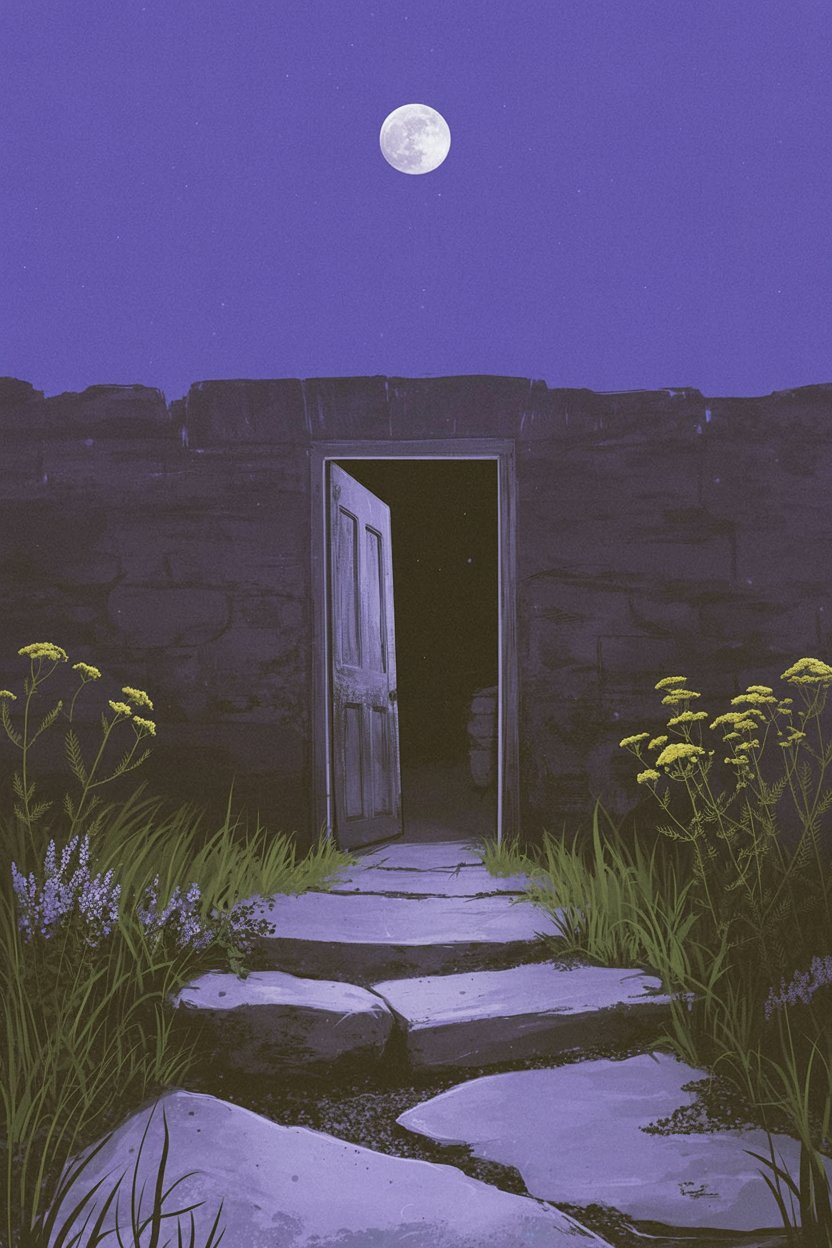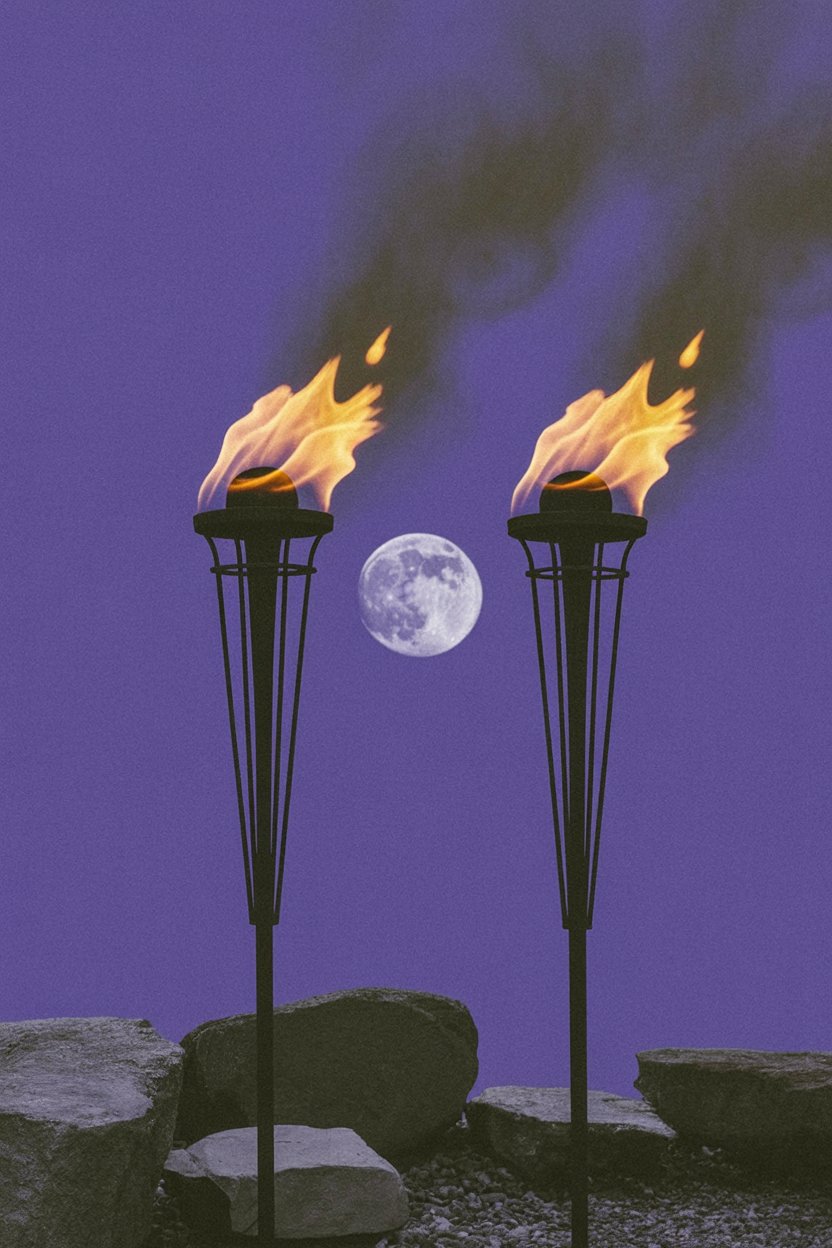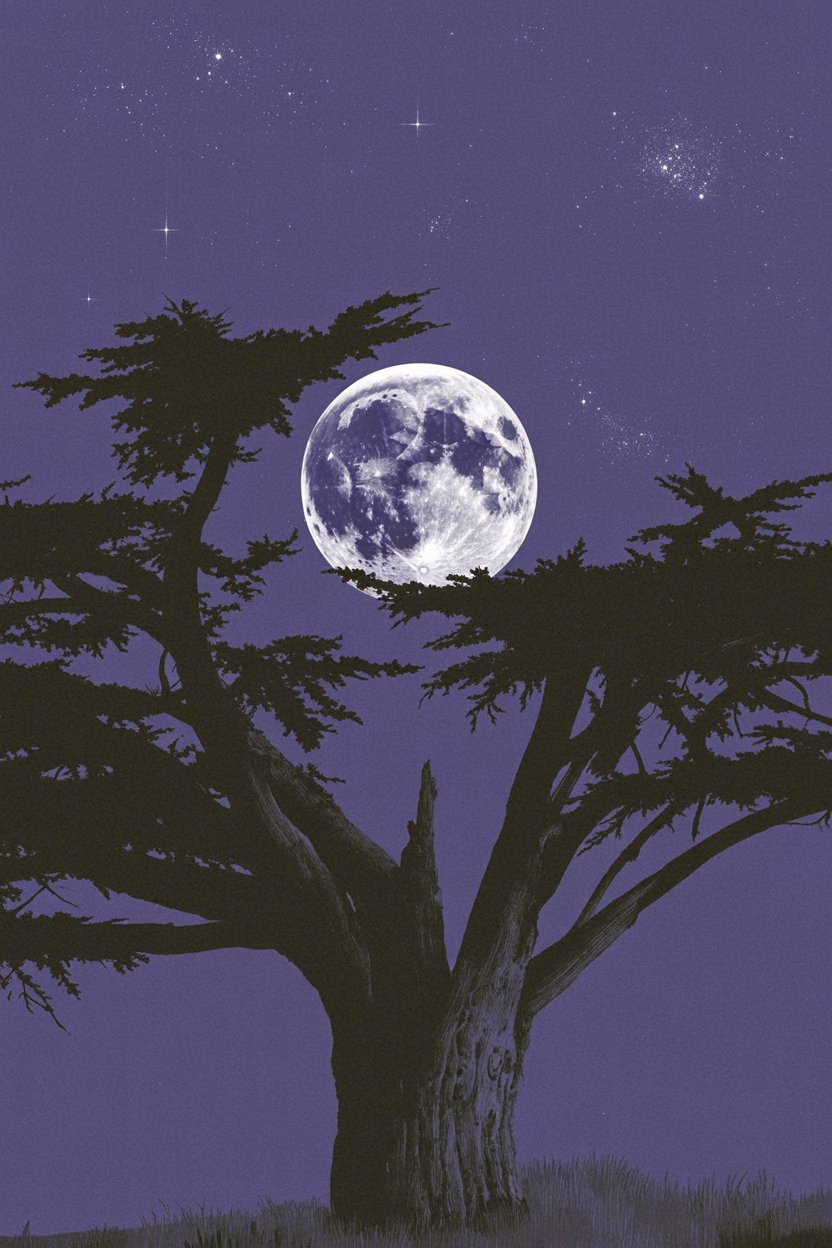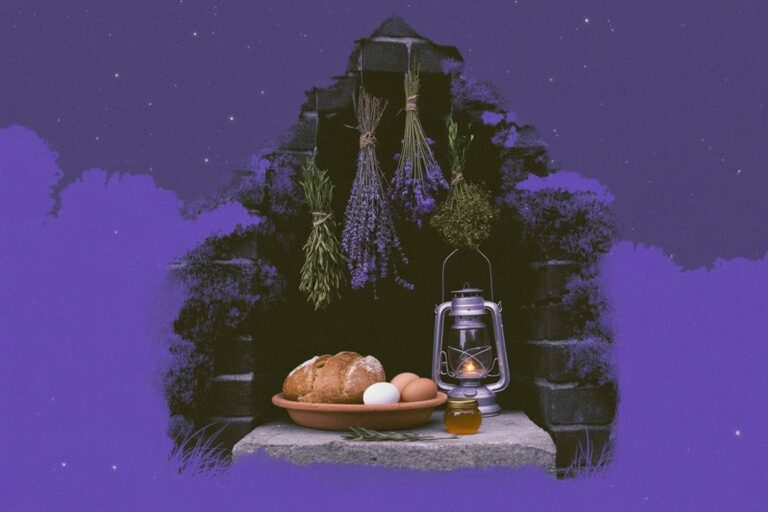Simple Tricks to Working with Hekate During the Full Moon
Please note that posts on this site may contain affiliate links
Hekate was originally a chthonic deity. A Titaness who predated the Olympians, she ruled the dark places: crossroads where three paths met, thresholds between worlds, the underworld where souls gathered after death. Her association with the moon came later, during the Roman period, when goddess identities began to blur and merge. This is thoroughly documented by scholars like Jacob Rabinowitz in Underneath the Moon: Hekate and Luna.
So when you work with Hekate during the full moon, you’re honoring both layers of her history. The chthonic Titaness who guards boundaries and the lunar goddess who illuminates the night. She’s always been liminal, moving between realms. Earth, sea, and sky all fell within her domain. Even Zeus bowed his head to her power. If she can move between the underworld and Olympus, between the realm of the dead and the living, the moon is just one more threshold she crosses.
The full moon brings emotional intensity. Everything feels sharper, louder, more. And that’s exactly when you need a guide who specializes in threshold moments. Hekate doesn’t calm the storm. She teaches you how to stand in it and see clearly.
What Happens During the Full Moon
Your body is roughly 60% water. The moon pulls the tides. It pulls you too, though you might not notice until the moon is full and something in you rises to meet it.
Sleep gets disrupted. You wake at 3 AM with your mind racing. Or you lie awake watching shadows move across the ceiling. The boundary between sleeping and waking gets thin. That’s a liminal state, the kind Hekate inhabits. You’re neither fully conscious nor dreaming, suspended in between.
Emotions amplify. Not new emotions, just the ones you already carry. Anger burns hotter. Anxiety spirals faster. Sadness settles deeper. But joy can also crack you open, and desire can feel like a physical force. The full moon doesn’t create these feelings. It turns up the volume on what’s already playing.
Attention shifts. The filter that usually screens out random thoughts and weird connections loosens. Pattern recognition goes into overdrive. You notice synchronicities, remember old dreams, see connections between things that shouldn’t connect. Your ego’s defenses drop just enough to let other information through.
This is why the full moon has always been considered a time of magic and madness. You’re already at a threshold. The veil between ordinary consciousness and something else gets permeable. If you’re going to work with a goddess of crossroads and in-between spaces, this is when she’s easiest to reach. You’re already standing where she lives.

Hekate as the Goddess of Thresholds
One of Hekate’s epithets is Enodia, which means “of the ways” or “of the crossroads.” She appears where paths intersect, where you have to choose. Crossroads are literal places in the ancient world, they left offerings for her at three-way intersections on the new moon. But they’re also metaphorical. Every decision point is a crossroads. Every moment of overwhelm where you don’t know which way to turn.
(Overwhelmed? Light a virtual candle and take 5 minutes. It actually helps.)
When emotional intensity hits during the full moon, you’re standing at a crossroads whether you realize it or not. Do you let the anger consume you or channel it? Do you sink into the sadness or let it move through? Do you act on the desire or sit with it? These are threshold moments. Hekate guards thresholds and grants passage through them.
Her symbols tell you how she works:
Torches: She carries two, one in each hand. They illuminate the path through darkness. She doesn’t remove the darkness, that’s necessary context. But she shows you where to step. When you’re confused and overwhelmed, her torches let you see options you couldn’t see before.
Keys: She holds the keys to all the realms. Underworld, earth, sea, sky. She unlocks what was closed. When something in you feels locked, inaccessible, stuck behind a door you can’t open, Hekate has the key. But she offers it. You still have to turn it and walk through.
Dogs: Black images of dogs accompany her, especially in her role as psychopomp. A psychopomp guides souls between realms, from life to death, from one state of consciousness to another. Dogs are loyal companions and fierce protectors. When you cross a threshold, you don’t go alone.
Triple form: Sometimes she appears with three bodies, three faces, looking in all directions at once. Past, present, and future. Maiden, mother, and crone. The three paths at the crossroads. This is the gift of threshold work: seeing multiple possibilities simultaneously, holding complexity without collapsing it into simple either/or.
She doesn’t remove your emotional intensity during the full moon. She meets you in it. That’s her territory. The overwhelm, the confusion, the sense of standing between states, that’s when she’s most present.
Preparing Your Space
Location matters more than materials. Hekate appears at thresholds, so work at one if you can.
Best locations (in order of traditional preference):
- An actual crossroads, ideally where three paths meet
- Your front door or back door (literal threshold)
- The edge of your property (boundary space)
- Dusk or dawn (liminal times)
- Anywhere you feel betwixt and between
If you’re setting up an altar or working space, these items connect to her traditional correspondences:
| Category | Options | Why They Matter |
|---|---|---|
| Colors | Black, deep red, saffron yellow | Black for chthonic/underworld, saffron for her traditional robe color |
| Scents | Myrrh, frankincense, cypress | All associated with death, the underworld, and sacred smoke |
| Stones | Black tourmaline, obsidian, onyx | Protective, absorbing, connected to earth and underworld |
| Symbols | Keys, images of crossroads, three-way designs | Direct representations of her domains |
Traditional offerings for Hekate (these come from the Deipnon, the monthly dark moon ritual in her honor):
- Eggs
- Garlic
- Honey
- Dark bread
- Red wine
- Pomegranate
You don’t need all of these. You don’t need any of these if you don’t have them. The location, your intention, and your presence matter more than having the right colored candle. Standing at your front door at dusk with a key in your hand is more aligned with Hekate than a perfect altar in a non-liminal space.
Mental and physical preparation:
- Acknowledge you’re in a heightened state (it’s the full moon, emotions are amplified)
- Identify what intensity you’re bringing to the threshold (anger, fear, confusion, desire)
- Bathe or wash if you can (water transitions you)
- Ground yourself before you begin (you’ll need to return to this state after)

Calling Her to the Crossroads
Invocation is invitation. You’re requesting her presence, stating why you’re calling, and offering relationship. It’s not a summons or a demand. Think of it as respectfully asking someone with more knowledge than you to show up and help.
Traditional Approach: The Orphic Hymn
The Orphic Hymn to Hekate is one of the oldest invocations we have. Here’s an excerpt:
Hekate of the Path, I invoke Thee,
Lovely Lady of the Triple Crossroads,
Celestial, Chthonian, and Marine One,
Lady of the Saffron Robe.
Keeper of Keys,
Guide of Souls,
Come to me now as I stand at the threshold.
You can recite the full hymn or use your own words. What matters is the structure:
- Address her with epithets (Hekate of the Crossroads, Torchbearer, Keeper of Keys)
- Acknowledge her domains (thresholds, the underworld, magic, guidance)
- State why you’re calling (I’m at a crossroads, I need illumination, I’m overwhelmed and need guidance)
- Offer something in return (my attention, this offering, my devotion)
Personal Approach
If formal hymns feel wrong in your mouth, speak plainly:
“Hekate, I’m standing at a crossroads. The full moon has stirred up everything I’ve been avoiding. I need your torches to light the path. I need your keys to unlock what’s stuck. I offer you this [wine/honey/attention] and ask you to be present with me tonight.”
Traditional practice calls her name three times. Once for each face, each path, each realm. Say her name and feel the air shift. You’re not looking for a vision or a voice. Presence feels like: attention sharpening, the sense of being witnessed, a change in the quality of the silence around you.

The Work Itself
Once you’ve called her, what do you actually do? Here are the main approaches. Pick what serves your need tonight.
1. Meditation and Listening
Sit in silence after the invocation. Watch what arrives. Thoughts you’ve been avoiding, memories that surface, sudden clarity about a situation, an image or symbol that means something. Hekate’s torch function is illumination. When you stop talking and start listening, you might see things you couldn’t see before.
2. Divination
Pull tarot cards, scry in a black mirror, open a book at random and read what you find. Divination with deity presence feels different than divination alone. Your attention gets pulled to certain cards. The fall feels intentional. The message comes through clearer. Ask specific questions: What do I need to see? Which path serves me? What am I not acknowledging?
3. Emotional Offering
Bring your full moon intensity to the crossroads and let it be witnessed. Cry if you need to. Rage if that’s what’s there. Shake with anxiety or burn with desire. Liminal deities don’t flinch from darkness or intensity. Hekate has seen everything. There’s relief in being seen without judgment, especially when you’re at your most raw.
This is different from venting. It’s offering. You’re saying: Here’s what I’m carrying. I bring it to you at this threshold. Bear witness.
4. Petition and Release
Write what you need on paper. Be specific. I need clarity about this decision. I need to release this anger. I need protection from this situation. I need a key to what’s locked in me.
Burn the paper. Watch the smoke rise and carry your words. The crossroads is a place of release. What you leave there, you walk away from. The full moon release work has been used for centuries precisely because the amplified state makes it easier to let go of what you’ve been gripping.
5. Shadow Work
Ask Hekate to show you what you’re avoiding. The full moon tends to bring shadow material up anyway. Might as well meet it consciously with a guide. Sit with the difficult truth. Look at the part of yourself you’ve been hiding. The crossroads is where you face what you’ve been running from.
6. Protection Magic
Keys lock as well as unlock. If you need boundaries, wards, protection from something or someone, this is when to ask. Hekate guards thresholds. She knows how to keep things out as well as let things in. State clearly what you need protected and why.
7. Threshold Crossing
Make a commitment. Choose a path. Take a step you’ve been delaying. Hekate opens doors, but you have to walk through them. If you’ve been standing at a crossroads in your life, paralyzed by indecision, this is the time to move. Ask for her guidance, then choose and act.
The full moon intensity gives you the energy to do what you’ve been putting off. Use it.
Closing the Ritual
When the work feels complete, close intentionally.
Steps for proper closure:
- Thank her for her presence and guidance (not for granting wishes or fixing your life)
- Make an offering if you haven’t already (leave it at the crossroads or threshold)
- State that the work is complete for now
- Release her presence consciously (“Hekate, I thank you and release you”)
- Ground yourself immediately
Grounding is not optional. You’ve been in an altered state. Your nervous system needs to discharge the intensity. Eat something. Drink water. Touch the earth with your hands. Wash your face. Do something physical and ordinary that brings you back into your body and the present moment.
Traditional practice leaves the offering at the crossroads and walks away without looking back. You’re releasing what you brought to the threshold. Don’t keep picking it back up.
Write down what happened. The liminal state fades fast. Insights slip away. Record what you noticed, what arrived, what shifted. You’ll want this information later when you’re trying to make sense of the pattern.

Between Full Moons
One ritual doesn’t build a relationship. If working with Hekate during the full moon resonated, here’s how to continue:
Daily threshold practice:
- Pause at doorways and acknowledge her
- Notice dusk and dawn (liminal times)
- Pay attention to decision points in your day (crossroads moments)
- Carry a key and dedicate it to her
Monthly practice:
- Track the moon cycle and your emotional patterns
- The Deipnon falls on the dark moon (new moon), traditionally for clearing and honoring
- Full moon for amplification and threshold work
- Each phase offers different opportunities
Ongoing relationship building:
- Leave regular offerings (weekly is common)
- Study her myths and historical worship
- Read the hymns to Hekate from various traditions
- Connect with others who work with Hekate
- Keep a dedicated journal for your Hekate encounters
Deepening the work:
- Explore her various epithets (each reveals a different aspect)
- Work with her at actual crossroads regularly
- Learn about the ancient Mysteries associated with her
- Practice threshold consciousness in ordinary life
- Study her role as psychopomp and guide
The full moon work is an entry point. The real magic happens when you start noticing that your entire life is full of thresholds, and you have a guide who specializes in navigating them.
Standing at Your Own Crossroads
Hekate contains contradictions. Chthonic and celestial. Ancient and immediate. Fierce and generous. Guardian and guide. She doesn’t resolve into simple categories, and neither do you.
When the full moon brings up contradictory emotions, overlapping intensities, simultaneous truths that don’t quite fit together, you’re already in her territory. The liminal space isn’t about choosing between darkness and light. It’s about holding both and seeing clearly anyway.
She offers keys, but you choose which doors to open. She carries torches, but you decide where to step. She guards the threshold, but you’re the one who crosses it.
Your practice with her will look different from anyone else’s. Personal gnosis matters. What arrives in your meditations, what you see in your divination, what you feel at the crossroads, that’s real data. Trust it.
The crossroads is wherever you’re standing when you need to choose. With Hekate as your guide, the full moon intensity becomes fuel instead of chaos. You learn to meet the overwhelm without drowning in it. You find your way through the dark with borrowed light until you realize you’re carrying your own torch.
That’s the gift of working with the Goddess of Thresholds: you learn that every ending is also a beginning, every boundary is also a doorway, and standing between worlds is exactly where the magic happens.







